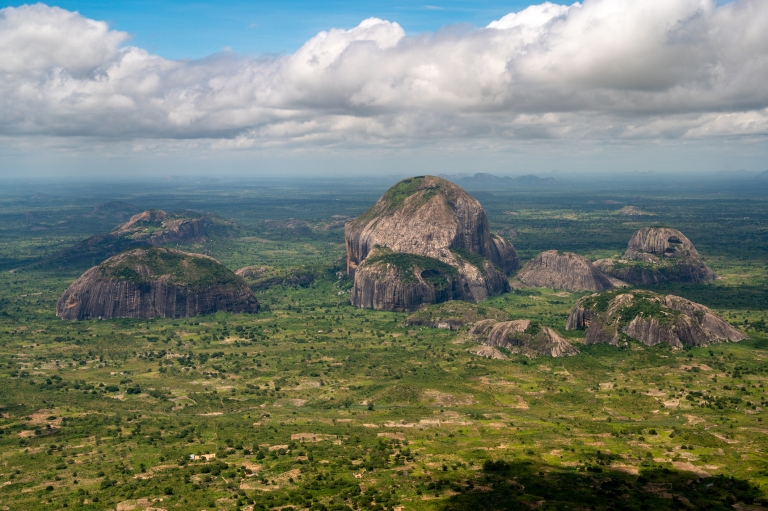A digital nomad visa is a temporary visa that allows employees to live and work in a foreign country.
It usually lasts 12 months—much longer than a traditional tourist visa. Employees can obtain digital nomad visas from either their employer or if they own a business that can be managed from anywhere in the world.
Digital nomad visas have only grown in popularity since the COVID-19 pandemic as more countries recognized the appeal of attracting remote employees. As of November 2024, 66 countries offer these visas.
Purpose and benefits of a digital nomad visa
Digital nomad visas enable employees to travel and legally work from a foreign country without having to obtain a work visa or pay expensive global immigration costs. Since most countries allow for extensions, one can enjoy all the benefits of global mobility and living like a local, and sometimes even legal residence status, without the extra legwork.
Digital nomad visas also benefit the country, supplying additional tourism and bolstering the economy with extra spending.
Eligibility requirements for a digital nomad visa
Eligibility requirements for a digital nomad visa vary from country to country. For example, most countries require applicants to be at least 18 years of age. Other common requirements include:
- Minimum income. This can be a minimum monthly or annual income. Employees can prove this with pay slips, tax forms, bank receipts, etc. Minimum thresholds usually vary between US$2,000-4,000. Some countries may also require a minimum balance in a bank account.
- Proof of healthcare insurance. Employees must have health insurance that covers them in their country of choice.
- Proof of employment or business ownership. Employees must prove that they have secured regular work that will support them through the duration of their visa.
- Clean criminal record. Most countries require employees to have a clean criminal record and want applicants to undergo a background check.
- Proof of accommodation. Some countries want employees to prove they have already found accommodation in their country of choice.
Interested employees must show the following documents in the application process:
- Valid passport (certain countries may require this passport to be valid for a specific amount of time)
- Return ticket
- Bank statements that prove the employee can meet the country’s minimum income requirements
- Contract from employer or other form of proof to show the applicant has remote work
Countries offering digital nomad visas by continent
As of November 2024, 66 countries offer digital nomad visas or something similar to a digital nomad visa that allows professionals to work abroad. The following is a list of those countries broken down by continent.
Europe
Europe is home to the most digital nomad visa opportunities. Spain’s low cost of living, short application, and streamlined application process for a digital nomad visa make it easy to obtain one, whereas Iceland has one of the highest monthly income requirements at US$7,763 per month.
Here’s a complete list of countries in Europe offering a digital nomad visa:
- Albania
- Croatia
- Cyprus
- Czech Republic
- Estonia
- France
- Georgia
- Greece
- Hungary
- Iceland
- Italy
- Latvia
- Malta
- Montenegro
- Norway
- Portugal
- Romania
- Spain
Countries offering something similar to a digital nomad visa include:
- Armenia. Offers a residency program that works well for remote employees or freelancers and allows foreigners to live and work in Armenia for up to one year. Employees do not need to demonstrate a minimum monthly income.
- Germany. Offers a Freelancer visa that is only available to freelancers in certain liberal arts professions like writers, teachers, or artists. The application process can take up to four months to get approved.
- Ireland. Offers a short-stay visa that lasts 90 days and can be renewed for an additional 90 days for some instances.
- The Netherlands. Offers a long-stay visa or a self-employed residence permit for contractors.
North and Central Americas
The North and Central Americas have fewer opportunities for a digital nomad visa than Europe. Income requirements vary just as widely, though, with El Salvador requiring a monthly income of at least US$1,460 in comparison to Belize, which requires an annual income of at least US$75,000 per individual.
Countries offering digital nomad visas in North and Central America include:
- Belize
- Costa Rica
- El Salvador
- Panama
Mexico is the only country in North and Central America that offers something similar to a digital nomad visa with its Temporary Resident Visa. This visa allows employees to live in Mexico for six months to four years. Employees won’t be able to work with Mexican companies but can continue to work remotely.
Middle East and Asia
The Middle East and Asia offer attractive digital nomad visa programs, with Thailand providing stays for up to 5 years and Japan allowing 6-month stays for remote workers. Both regions continue expanding their visa options to accommodate the growing digital nomad community.
Countries that offer digital nomad visas in the Middle East include:
- Abu Dhabi (United Arab Emirates)
- Dubai (United Arab Emirates)
- Goa (India)
- Japan
- Malaysia
- Sri Lanka
- Thailand
The following are countries that offer something similar to a digital nomad visa:
- Bali. Offers a Visa B211A or the Social Visa/Cultural Visa, which, though valid for only 60 days, can be extended twice for an additional 60 days (180 days total). If employees still wish to stay, they can apply for the B211A Business Visa ONSHORE, which can also be extended twice.
- South Korea. Offers a Working Holiday Visa enabling employees to live and work in Korea for up to one year. A caveat is that only citizens from a select list of 25 countries can apply.
- Taiwan. Offers the Employment Gold Card Visa that allows employees to stay up to three years with renewals.
- Turkey. Offers the Turkish Residence Permit, which allows those who plan to stay in Turkey for more than three months to work, study, live, open a bank account, and more, in Turkey.
South America
Brazil was the first South American country to start rolling out digital nomad visas in January of 2022, showing how quickly the rest of South America jumped on board. South American digital nomad visa requirements are typically more lax than Europe’s and Asia’s, with lower monthly income requirements.
Countries offering digital nomad visas in South America include:
- Argentina
- Brazil
- Colombia
- Ecuador
Peru is the only country in South America that offers something similar to a digital nomad visa, enabling U.S. citizens to work in Peru for up to 183 days.
Caribbean
Employees should carefully review requirements for Caribbean countries since some visas are shorter than average, with places like Aruba only offering up to a three-month stay for applicants.
These countries offer digital nomad visas:
- Anguilla
- Antigua and Barbuda
- Aruba
- Bahamas
- Barbados
- Bermuda
- Cayman Islands
- Curaçao
- Dominica
- Grenada
- Saint Lucia
- Montserrat
Puerto Rico is the only country in the Carribean that offers something similar to a digital nomad visa. Its ESTA (Electronic System for Travel Authorization) visa is open to those living in the U.S., Canada, or neighboring territories and allows employees to live and work in Puerto Rico for up to 90 days.
Africa
Most African countries offer visas for three to six months with potential extensions. Egypt has announced its intentions to launch a digital nomad visa, though as of 2024, it has not been released yet.
These countries offer a digital nomad visa:
- Cabo Verde
- Mauritius
- Namibia
- Seychelles
- South Africa
Oceania
New Zealand and Australia offer visas remarkably similar to digital nomad visas, typically allowing foreign employees to work in their country of choice for up to one year. Note that these visas target young people aged 18-35.
- Australia. Offers a Visitor Visa, which can be granted for three, six, or 12 months. Employees must prove a bank balance of US$3,262. There is no monthly income requirement.
- New Zealand. Offers a Working Holiday Visa, which allows employees to work for up to 12 months in New Zealand (or up to 23 months for U.K. or Canadian applicants).
Digital nomad visas vs. tourist visas
A digital nomad visa allows an individual to work in a country, while a tourist visa enables one to visit a country. The most significant differences between these two visas are:
- Intention. Tourist visas are made for short-term visits and usually last no longer than three months. In most countries, digital nomad visas allow someone to work remotely for up to a year.
- Duration. Tourist visas are intended for 30-90 day visits. Digital nomad visas last longer, usually between 6-12 months.
- Taxes. Depending on the country, digital nomads often must handle remote work taxes—though some countries grant exemptions or exceptions. Tourists don’t have to worry about foreign taxes.
- Cost. Tourist visas are usually granted for free. Digital nomad visas can cost between US$200 to US$2,000.
- Family member eligibility. Most digital nomad visas allow applicants to bring their spouse and/or children, though sometimes applicants will have to pay more for their application or supply proof of higher income. Some countries allow employees to bring extended family, though this varies from country to country.
Digital nomad visas offer more long-term stability for employees ready to commit to a year-long stay. Tourist visas are perfect for those only looking to stay in a country for a month or two.
Application process for a digital nomad visa
Application processes vary from country to country, but employees typically must do the following:
Step one: Review visa eligibility requirements
Since eligibility requirements vary from country to country, even seasoned digital nomad visa holders should research the requirements for the next country listed on their itinerary. Employees should familiarize themselves with:
- The required documents (passport, proof of employment or business ownership, etc.)
- Potentially needing to invest in a new form of healthcare insurance
- Potentially needing to secure housing
If employees have any pets, they’ll also want to take the necessary measures to prepare their animals for travel. That might involve updating their pets’ vaccines, training them to handle the stress, or obtaining the documents needed.
Step two: Supply necessary documents
As mentioned above, these documents vary from country to country, but employees must always supply their passports, proof of employment at their own business or another company, and proof of income.
Employees should confirm the validity of their passports before they supply these relevant documents. If a passport is due to expire within six months of applying for a digital nomad visa, countries will often reject the application.
Interested applicants should review their documents carefully before submitting them. Document errors are among the most common reasons for digital nomad visa denials.
Step three: Submit application form
Digital nomad visa applicants need to:
- Fill out their application form either online or directly at the embassy or consulate. Some documents may have to be translated or certified with an apostille stamp.
- Pay the application fee. This can vary from anywhere as low as US$21 in Cabo Verde to as high as US$2,000 in Barbados.
- Make an appointment with the nearest consulate or embassy for the visa interview.
- Wait. Approval timelines vary from country to country, but applicants will typically be kept waiting at least one month. Some countries may offer expedited timelines.
If or when approved, digital nomad visa holders can usually work in the country of their choice for six months to a year, though some countries allow extensions of up to five years.
Disclaimer: The intent of this document is solely to provide general and preliminary information for private use. Do not rely on it as an alternative to legal, financial, taxation, or accountancy advice from an appropriately qualified professional. © 2024 Velocity Global, LLC. All rights reserved.



